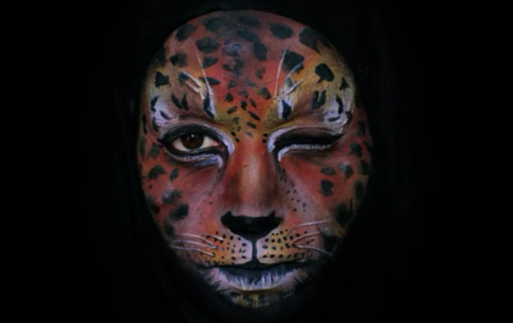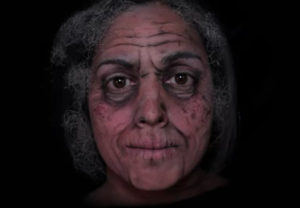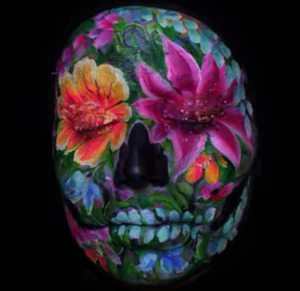
Credit: YouTube.com
The circle of life happens all around us every moment. And yet it’s a difficult concept to think about on a daily basis. The stages of youth, old age, death, decomposition and rebirth happen so slowly that we rarely notice them in real time.
That’s why artist Emma Allen decided to create her short film, “Ruby.” In it, she condenses the circle of life down to just 75 seconds of footage, allowing us to see these complex stages in full. It’s a beautiful reminder of the brevity of life and the detailed nature of the universe.

Credit: YouTube.com
Allen uses stop motion and face paint to show the connection between life and death. Each scene in her film is actually just a brief shot of her face against a black background. She makes slight changes to her makeup in every stop-motion frame, making it appear as though she is aging rapidly. Because she had to transform her entire face in-between each stage of life and death, it took her five days to do all of her makeup and film each scene.
The film begins with a bare-faced, youthful shot of the artist. As the film progresses, she gives herself small wrinkles with face paint. Within a few seconds, those wrinkles deepen, and her hair becomes a languid grey. She closes her eyes in death, and her face slowly becomes more skull-like, showing how the body decomposes after death.
Rather than stopping at the skull phase, however, Allen shows us the full circle of life. In the next shot, plant life begins to grow between the cracks of bone as the minerals in the body feed the greenery around it. Eventually, the entire skull becomes a garden of colorful flowers and vegetation.

Credit: YouTube.com
Those flowers dissolve into an image of the stars and the universe, reminding us that all life on Earth is actually made of the same elements as the stars and planets in our galaxy.
We later see those star elements condense down into a single cell on the side of the artist’s face, and that cell slowly grows into a fetus in utero. At one point, we see the bright pink fetus’ heart “beating” in the womb as the artist puffs air in and out of her cheek.
Soon, the fetus grows so large that it takes over the artist’s entire face. We still can’t tell what kind of lifeform the fetus will become at this stage. By the end of the film, we get our answer: It’s a baby jaguar.
In the final scene, the now-adult jaguar winks. This reminds us that, although we all eventually die, the elements in our bodies become part of a future life. The universe is a near-constant cycle of birth, death, decomposition and fertilization of the next generation. Thus is the circle of life.
As Allen shows beautifully in her short film, every life eventually comes to an end. But this isn’t inherently negative. Each death releases the proteins, minerals and other elements needed to sustain the next life. In this sense, none of us ever truly disappear. The chemicals that make us who we are simply find new homes in other forms.
Take a look at Emma Allen’s short film below:

 The Circle of Life — in Stop-Motion
The Circle of Life — in Stop-Motion


 John Mulaney’s “Funeral Planning” on Netflix: No Real Plan
John Mulaney’s “Funeral Planning” on Netflix: No Real Plan

 Composting Bodies Is Now Legal in a Dozen States
Composting Bodies Is Now Legal in a Dozen States














